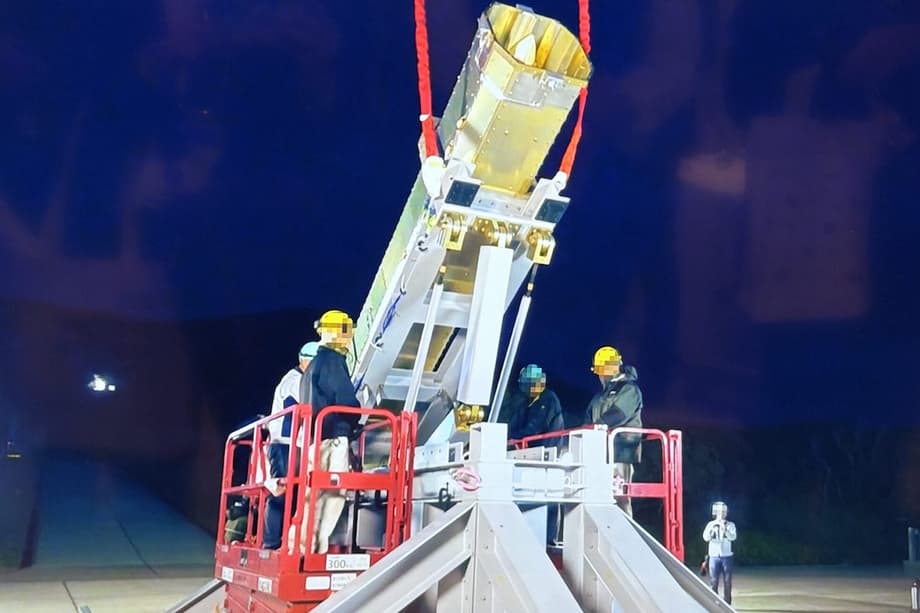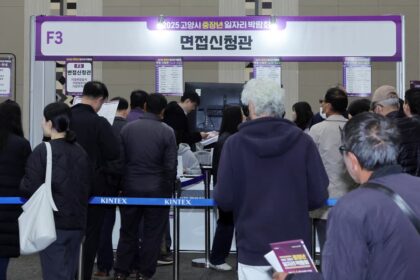A new missile to close a critical gate to the Pacific
Japan is accelerating work on a new family of modular, long range missiles built to make the Miyako Strait a very difficult passage for the Chinese navy. The prototype, unveiled by Japan’s Acquisition, Technology and Logistics Agency (ATLA), uses a compact, low observable airframe and an efficient turbojet to attack warships from standoff distances. The key is a flexible design. Internal bays accept interchangeable payloads, so one common missile body can carry an anti ship seeker, a reconnaissance sensor, a jammer or decoy unit, or a high yield warhead. The same weapon can scout a formation, blind it, confuse it and strike it, depending on the loadout that a commander selects.
- A new missile to close a critical gate to the Pacific
- Why the Miyako Strait matters
- Inside Japan’s modular missile program
- How a network of launchers would fight
- How China would try to break the barrier
- Alliance firepower and data sharing
- Budget, production and local politics
- Mine warfare and gaps in the south
- At a Glance
The range is undisclosed. The airframe and propulsion point to performance beyond Japan’s current surface fired missiles, and the project clearly sits alongside a broader modernization drive. Tokyo is already extending the reach of its Type 12 surface to ship missile from about 200 kilometers to well beyond 1,000 kilometers. Japan is also testing a Hypervelocity Glide Vehicle (HVGV) for longer range regional fires. Together, these systems aim to hold open sea lanes and close key corridors to an adversary. Few corridors matter more than the Miyako Strait.
In a crisis over Taiwan, that strait becomes a funnel for Chinese carriers, destroyers and submarines heading into the western Pacific. A chain of Japanese islands runs along the first island chain from Kyushu through Okinawa and past Taiwan. Batteries positioned on those islands can establish crossing fires and force ships to maneuver under constant threat. The new modular missile is meant to add a versatile arrow to that quiver.
Why the Miyako Strait matters
The Miyako Strait is about 250 kilometers wide between Okinawa’s Miyako Island and Taiwan’s Yonaguni. It is one of the few deep water gaps in the first island chain. Chinese carrier groups, large destroyers and surveillance ships regularly pass through it to reach blue water training areas. The Japan Self Defense Forces monitor those movements from the air and sea, and publicize transits by People’s Liberation Army Navy and China Coast Guard vessels when they occur.
Chinese operations have grown more complex. In December of a recent year, Chinese navy frigates and heavily armed coast guard ships executed combined maneuvers near the strait and the Senkaku Islands. Analysts viewed the actions as a rehearsal for blockade tactics. Some of the coast guard ships reportedly switched off their transponders near disputed waters, which reduced visibility into their precise positions. The episode underscored how the strait has become a regular stage for pressure and signaling.
For Japan, the stakes are strategic and practical. The Ryukyu island chain hosts communities, airfields and shipping routes. In conflict, ships entering or leaving the East China Sea would be exposed inside the strait. Shore based anti ship units on Amami Oshima, Miyako and Ishigaki already give Tokyo a way to threaten any ship formation that lingers in that corridor. A modular missile that can perform scouting, deception and attack from the same launcher raises the difficulty for any navy trying to fight through the gap.
Inside Japan’s modular missile program
ATLA’s prototype presents a fresh approach to coastal defense. Rather than field many different missiles, the program starts with a common airframe and open architecture electronics. That approach keeps the weapon adaptable to changing threats. It also allows industry to insert new sensors or payloads more quickly without redesigning the entire missile. Japan plans a new test phase in 2027 with two improved prototypes, known as Airframe A and Airframe B, to validate sensors, data links, flight controls and composite structures for lower radar visibility.
Airframe, propulsion and stealth
The missile uses a compact airframe shaped to reduce radar reflections. The turbojet provides sustained cruise at low altitude over long distances. Composite materials are expected to cut weight and reduce signature. The form factor appears suited to mobile truck launchers and could be compatible with ship or air launch in later variants if Japan chooses that route. While Tokyo has not disclosed the range, the platform’s size and engine class suggest it will reach well beyond older systems.
Sensors, seekers and payload bays
The core of the design is an internal bay system that accepts plug in modules. Options discussed by program watchers include infrared seekers, dual mode seekers that combine radar and imaging, electro optical and infrared payloads for reconnaissance, and self protection jammers or repeater decoys. Warheads can be tailored for ship killing or land targets. The result is a family of variants built around one supply line. A battery can carry a mix of missiles, some configured to scout and jam, others to strike. The missiles can share targeting data, change course in flight and operate under heavy electronic interference.
Japan’s modernization of the Type 12 surface to ship missile gives context for the new weapon. The Type 12 upgrade program aims to push range from a few hundred kilometers to well past 1,000, with improvements in seekers, guidance and survivability. At the same time, work on Japan’s Hypervelocity Glide Vehicle is intended to provide even longer reach and high speed flight profiles that are harder to intercept. The modular missile fills the space between, providing a survivable, stealthier cruise profile and the flexibility to carry specialized payloads without building a unique missile for each role.
A common electronics backbone and improved data links are central. The 2027 test phase will focus on faster communications and stronger resistance to jamming. If the missile can receive midcourse updates from aircraft, ships or satellites, it can be retargeted against a ship that changes speed or course. That is vital in anti ship warfare, where a target’s position can drift many kilometers during a missile’s flight time. The ability to redirect in flight reduces wasted shots and raises the chance of a coordinated mass attack arriving on cue.
How a network of launchers would fight
Japan is building a layered kill chain that starts with finding targets and ends with precise effects. Land based surveillance radars, P 1 maritime patrol aircraft, E 767 airborne early warning platforms, and space based sensors feed the national air defense network. Mobile missile batteries can be dispersed across the Ryukyu chain and shoot from concealed positions. After firing, those trucks can relocate quickly to avoid counter strikes. The new modular missile, with versions dedicated to reconnaissance and electronic attack, would let a single battery shape the fight before and during a strike.
In practice, a strike package may unfold in waves. First, missiles configured as jammers and decoys try to open a corridor. They complicate the picture for shipboard radars and missiles. Next, reconnaissance configured missiles use electro optical or infrared sensors to update the location of high value ships, passing data back over secure links. Finally, strike configured missiles guide on the updated tracks. If a Chinese formation deploys airborne jammers or tries to shoot down the incoming salvos, the network can alter routes and timing to split defenses.
Saturation is the logic. A carrier group’s escorts carry many interceptors, but magazine depth is finite and radar operators can misidentify decoys under stress. The modular approach equips Japan to create a balanced salvo, instead of a single type of missile shot in one wave. That balance matters in a region where electronic warfare has become central to every engagement and where ships sail under the cover of long range sensors and fighters.
How China would try to break the barrier
China is unlikely to accept a sealed gate at Miyako. The People’s Liberation Army Navy brings layered defenses to sea, including long range surface to air missiles on large destroyers, short range point defense systems, and powerful electronic warfare suites. Carrier based fighters and airborne early warning aircraft patrol overhead. From the mainland, long range bombers and land based fighters can surge into the area with anti ship weapons, while rocket force units hold fixed launch sites at risk with ballistic and cruise missiles.
Chinese reconnaissance and targeting have also grown more persistent. A WZ 7 high altitude drone recently flew a path over the Sea of Japan, demonstrating that Beijing can use Russian or North Korean airspace to reach sensitive zones. That flight showcased long endurance sensing that can support naval operations with line of sight communications and electronic intelligence. Surveillance aircraft like the KJ 500 and Y 9 variants add radar coverage over broad sectors.
Chinese officials have telegraphed their intent to operate regularly near Japan. Senior Colonel Shen Jinke, a spokesperson for the Chinese Air Force, defended long distance flights and drills in nearby waters.
Shen said these regular, long distance exercises are in line with international laws and practices and are necessary for building a strong air force.
The posture is often blunt. General Ma Xiaotian, then commander of the Chinese Air Force, put it this way at a public event years ago:
Ma said the Sea of Japan is not Japan’s sea.
On the maritime side, the China Coast Guard has sailed some of the largest law enforcement ships in the world near the Senkaku Islands, including vessels armed with 76 millimeter guns. Those ships have operated in coordinated fashion with navy frigates and have tested blockade style tactics. In war, Chinese forces would likely try to hit island bases and mobile launchers early, deploy layers of decoys and jammers, and send fighters and drones to hunt Japanese batteries. The new Japanese missile is being designed with that harsh environment in mind.
Alliance firepower and data sharing
Japan does not plan to fight alone. U.S. forces in and around Japan bring long range sensors, air defense, and strike options. The U.S. Marine Corps is fielding a Maritime Strike Tomahawk with a reach of about 1,000 miles. Marines plan to deploy temporary island batteries to fire at warships from well outside the range of many Chinese systems. Today the Marines operate the Naval Strike Missile on a mobile launcher known as NMESIS, and the Tomahawk will expand that reach significantly in coming years. Japan itself is buying Tomahawk missiles for its navy to cover key approaches.
These U.S. and Japanese systems can share data and create overlapping fields of fire. U.S. and Japanese airborne early warning aircraft, surface ships, and ground radars contribute to a common picture. That picture helps retarget missiles in flight and steer new salvos from the best position. It also allows shooters to relocate after firing, since other nodes can take over guidance and tracking. The new modular missile is meant to plug into that network and draw on allied cues to strike fast moving ships that try to sprint through the strait.
Caution will shape how this network is used. Analysts in Tokyo and Washington expect strict rules on what data are shared for strikes on targets located deep inside Chinese territory. Leaders will want to manage nuclear risk. Another practical concern is inventory. Western forces have learned in recent conflicts that missile stockpiles can run down quickly. Japan’s shift to a common airframe with swappable payloads is partly a hedge against those realities, allowing industry to concentrate production and field a versatile weapon that can fill several roles as needed.
Budget, production and local politics
Japan’s defense spending is rising to levels not seen in the postwar era. Tokyo has set a target to reach roughly 2 percent of gross domestic product on defense by the latter part of this decade. New missiles, sensors, and aircraft consume a large share of that plan. Building the modular missile in meaningful quantities will require steady funding and close cooperation among government, industry and the Self Defense Forces. The electronics, seekers and composite structures demand specialized suppliers and rigorous testing.
Local acceptance is another piece of the story. Host communities across Okinawa Prefecture already carry a heavy share of the U.S. alliance footprint. Additional Japanese missile units on islands like Miyako and Ishigaki face scrutiny from residents who worry about being drawn into a fight. Tokyo will need to show how it intends to protect civilians, harden shelters, and relocate sensitive sites if tensions spike. Training and dispersal can reduce the visibility of launchers and complicate an adversary’s targeting picture.
Mine warfare and gaps in the south
Missiles are only one layer. The Japan Maritime Self Defense Force has refreshed interest in naval mine warfare. In a recent statement, the Joint Staff Office said an unusual mine laying exercise near the Sakishima Islands aimed to send a clear message about Japan’s will to resist coercion.
The Joint Staff Office said the drills aimed to demonstrate Japan’s determination not to allow unilateral changes to the status quo by force.
That location matters. South of the Miyako Strait, the Bashi Channel between Taiwan and the Philippines is another route into the Pacific. Japan has fewer defensive positions there. Mines, combined with maritime patrol aircraft and unmanned systems, offer a way to complicate any attempt to push through that gap. Newer Japanese mines can be deployed by tenders, frigates, and aircraft, and the navy is studying containerized modules and unmanned underwater vehicles to broaden options. If combined with the modular missile network further north, a defender could shape routes, slow an adversary and force it to commit escorts and engineers before it even reaches the main pressure point.
At a Glance
- ATLA revealed a prototype for a modular, long range anti ship missile with a compact, low observable airframe and a turbojet engine.
- The design uses internal bays for swappable modules, enabling anti ship, reconnaissance, jamming, decoy and strike variants from a common missile body.
- Testing in 2027 will trial two improved prototypes, Airframe A and Airframe B, with better sensors, faster data links, refined controls and stealthier materials.
- The missile’s range is undisclosed but is expected to exceed current Japanese surface fired systems and complement the extended range Type 12 and Japan’s Hypervelocity Glide Vehicle.
- Japan aims to turn the 250 kilometer wide Miyako Strait into a highly defended corridor using shore based batteries across the Ryukyu chain.
- Chinese forces are practicing complex operations near the strait, including combined navy and coast guard maneuvers and expanded air and drone surveillance.
- Chinese officials defend regular long distance drills near Japan, while Japanese forces anchor a growing alliance network of sensors and shooters.
- U.S. Marines plan to field Maritime Strike Tomahawks on island launchers, and Japan is buying Tomahawks to expand reach and create overlapping fires.
- Stockpile limits, production capacity and local community concerns are key challenges for Japan’s missile buildup.
- Recent mine laying exercises near the Sakishima Islands signal that mines will complement missiles to shape routes in nearby waters.











